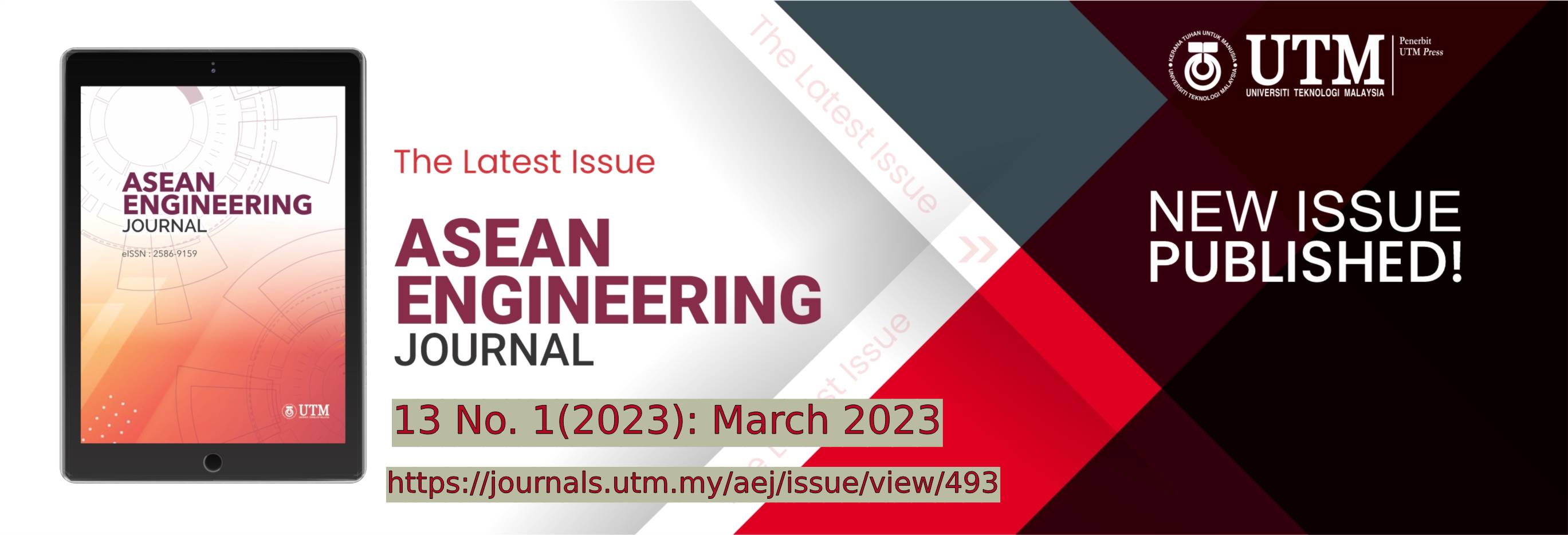INVESTIGATION OF THE IMPLEMENTATION OF LEADER-FOLLOWER FORMATION CONTROL TO BIPEDAL LOCOMOTION
DOI:
https://doi.org/10.11113/aej.v13.18672Keywords:
bipedal locomotion, multi-agent, leader-follower, consensus, inverted double-pendulumAbstract
Robot that uses bipedal locomotion such as humanoid robot has a unique appeal in which the robot can perform many duties/works that cannot be done by wheeled robots due to spatial and environmental constraints. Related literature were about biped robots and robot arm that uses the concept of central pattern generator (CPG). Biped robots that use CPG (technically a neural oscillators) do not need any mathematical model of the robot itself. The controller “exploits” the dynamics of the robot to achieve an efficient way to drive the robot’s joints. The driving frequency from this type of controller is thus heavily influenced by the dynamics of the robot it controls. One disadvantage of this method is that we cannot adjust the walking/movement parameter easily. Inspired by the idea of central pattern generator where one central “brain” controls the movement of the joints of the robot and the fact that the system uses neural oscillators reach some kind of “consensus”, we are interested to study the feasibility of the implementation of leader – follower formation control based on consensus algorithm to bipedal locomotion system. The method studied in this report is to force the dynamic model of the double pendulum to match the kinematic model of the double integrator agent that uses consensus algorithm in forming formation. The walking/movement parameters of the robot using the proposed method are defined by one central “brain”, and then the joints are working in consensus way to achieve the target joints’ trajectories specified by the “brain”. The study also concludes the notion of stability of the system driven by this controller which strongly related to the consensus ability in the context of Multi – Agent System.
References
M. Shafiee-Ashtiani, A. Yousefi-Koma, and M. Shariat-Panahi, 2017. “Robust bipedal locomotion control based on model predictive control and divergent component of motion,” 2017 IEEE International Conference on Robotics and Automation (ICRA) 3505–3510, doi: 10.1109/ICRA.2017.7989401.
C. P. Santos, N. Alves, and J. C. Moreno, 2017, “Biped Locomotion Control through a Biomimetic CPG-based Controller,” Journal of Intelligent and Robotic Systems 85: 47–70, doi: https://doi.org/10.1007/s10846-016-0407-3.
S. Auddy, S. Magg, and S. Wermter, 2019, “Hierarchical Control for Bipedal Locomotion using Central Pattern Generators and Neural Networks,” 2019 2019 Joint IEEE 9th International Conference on Development and Learning and Epigenetic Robotics (ICDL-EpiRob), 13–18, doi: 10.1109/DEVLRN.2019.8850683.
M. Thor, T. Kulvicius, and P. Manoonpong, 2021, “Generic Neural Locomotion Control Framework for Legged Robots,” IEEE Transactions on Neural Networks and Learning Systems, 32(9):doi: 10.1109/TNNLS.2020.3016523.
A. D. Myers, J. R. Tempelman, D. Petrushenko, and F. A. Khasawneh, 2020, “Low-cost double pendulum for high-quality data collection with open-source video tracking and analysis,” HardwareX, 8: e00138, Oct. doi: 10.1016/J.OHX.2020.E00138.
T. Zielinska, G. R. R. Coba, and W. Ge, 2021, “Variable Inverted Pendulum Applied to Humanoid Motion Design,” Robotica, 39(8): 1368–1389, doi: https://doi.org/10.1017/S0263574720001228.
A. Bahramian, F. Towhidkhah, S. Jafari, and O. Boubaker, 2020, “A double pendulum model for human walking control on the treadmill and stride-to-stride fluctuations: Control of step length, time, velocity, and position on the treadmill,” Control Theory in Biomedical Engineering. 267–285. doi: 10.1016/B978-0-12-821350-6.00010-X.
T. Orhanli and A. Yilmaz, 2019, “Analysis of Gait Dynamics with the Double Pendulum Model,” in 2019 27th Signal Processing and Communications Applications Conference (SIU). 1–4. doi: 10.1109/SIU.2019.8806587.
W. Ren and R. W. Beard, 2008. Distributed Consensus in Multi-vehicle Cooperative Control, 1st ed. London: Springer, doi: https://doi.org/10.1007/978-1-84800-015-5.
D. W. Djamari, 2020 “Distributed position estimation approach for multiagent formation with size scaling,” Asian Journal of Control 24(1): 439-447 , doi: 10.1002/asjc.2430.
Z. Lin, W. Ding, G. Yan, C. Yu, and A. Giua, “Leader-follower formation via complex Laplacian,” Automatica, 49(6): 1900-1906 , 2013, doi: 10.1016/j.automatica.2013.02.055.
M. Mesbahi and M. Egerstedt, 2010. Graph theoretic methods in multiagent networks. doi: 10.1515/9781400835355.
W. Ren and R. W. Beard, 2005, “Consensus seeking in multiagent systems under dynamically changing interaction topologies,” IEEE Transactions on Automatic Control, 50(5:) 655 – 661 doi: 10.1109/TAC.2005.846556.
H. G. Tanner, 2004 “On the controllability of nearest neighbor interconnections,” in Proceedings of the IEEE Conference on Decision and Control, 3. doi: 10.1109/cdc.2004.1428782.
S. Kajita and K. Tani, 1996 “Experimental Study of Biped Dynamic Walking,” IEEE Control Systems Magazine, 16(1): 13 – 19. doi: 10.1109/37.482132.
U.S. Department of Health and Human Services, 2018 Physical Activity Guidelines for Americans 2nd edition. [Online]. Available: https://health.gov/sites/default/files/2019-09/Physical_Activity_Guidelines_2nd_edition.pdf. 1 August 2022
H. K. Khalil, 2002.Nonlinear Systems 3rd ed, 18(16) Prentice Hall
















